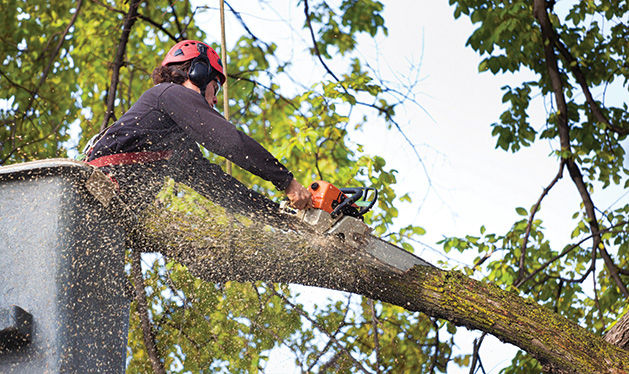
Breaking up is hard to do, especially during February—aka Valentine’s Day's host month. Days leading up to 2.14 are festooned with hearts, flowers, sweets and romance (genuine and otherwise). But some good things must come to an end, including, on occasion, your relationship with—a tree.
Knowing when to call it quits with a questionable tree is the first step in a successful breakup. “If a tree has dry, crunchy buds or if you scratch a twig, and it is also dry without a live green layer underneath, then that's a telltale sign it's dead,” says Alan Branhagen, MN Landscape Arboretum’s director of operations. “If a tree turns fall color or shows leaf drop earlier than normal, that's not a good sign, as is widespread branch dieback (dead branches) or plate-like shelf fungi coming out of its trunk.”
If you suspect your tree’s in trouble, Travis McDonald, a certified arborist at Davey Tree, suggests:
- Look for severed roots, signs of decay, such as mushrooms, or areas where the ground is heaving up.
- Check the tree’s root collar (area of the trunk just above the soil) for peeling or loose bark, cracks or deep slits in the tree.
- Examine the entire trunk for signs of swelling, cavities, soft wood or small holes.
- Inspect the upper layer of branches and leaves for dead or dying branches that hang low and lack bark; weak, V-shaped unions, where two branches have grown together; excessively thick, dense canopies that could easily break; cankers, dead sections of bark on branches or limbs; and leaning limbs or branches.
“If you catch problems early, you can often fix them, and your tree can keep on living for decades. But if you have a dead tree in your yard, that could be a huge risk, especially in our brutal winters,” McDonald says.
Know the cold facts. Winter provides its own level of risk to trees, especially for those already in a weakened state. “Trees going into winter in a distressed state are less likely to react to and survive the vagaries of winter, from extreme low temperatures to abruptly changing temperatures,” Branhagen says. “Also a good amount of energy is needed to re-leaf in the spring, so the plant can feed itself with photosynthesis the following season.” McDonald cautions, “Wind, ice or snow from a bad storm could cause that dead tree to break or even fall over.”
Don’t be tempted. In a heavily treed lot or for lazy landscapers, it might be “easier” to leave a dying or dead tree in place. “Trees that are dead or dying are hazards plain and simple,” Branhagen says. “They can drop readily in storms and sometimes without reason where they can cause damage to property (cars, homes, fences ...), community infrastructure like power lines, or worse cause injury or death to people beneath them.”
Ready to make the cut? “The best time to remove a tree is as soon as possible after a chronic diagnosis,” Branhagen says. “A certified arborist is always a good investment to make the call if you feel uncomfortable about the decision.”









